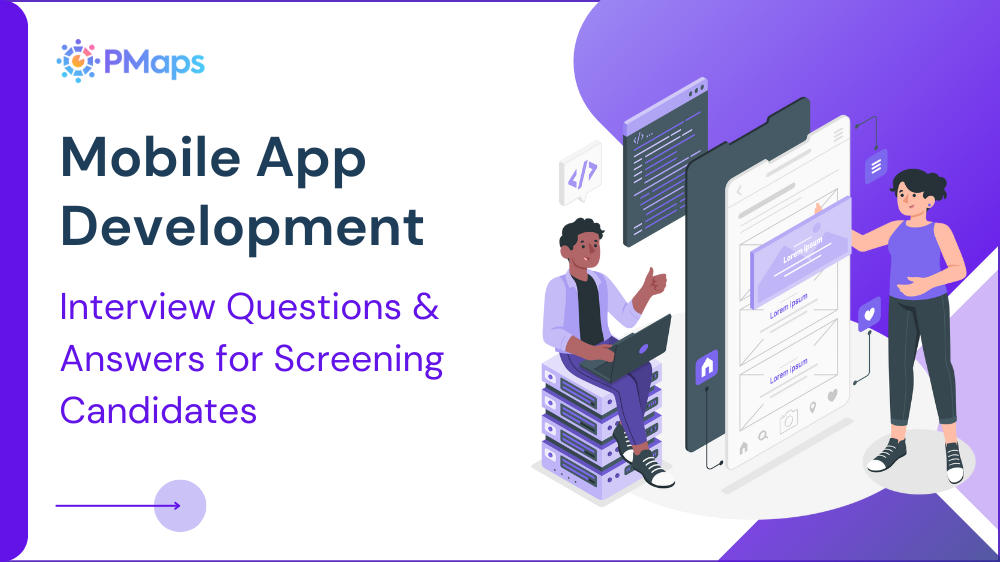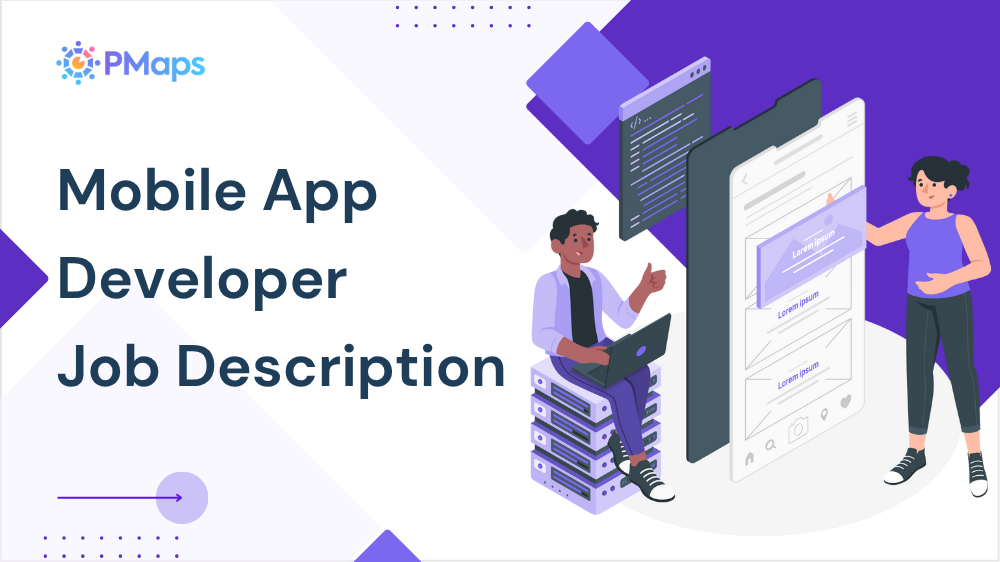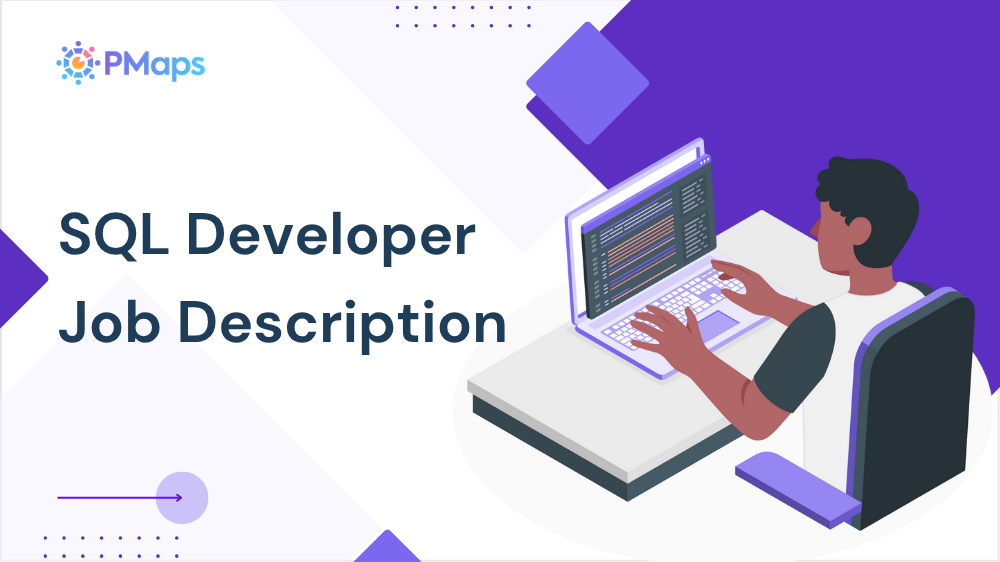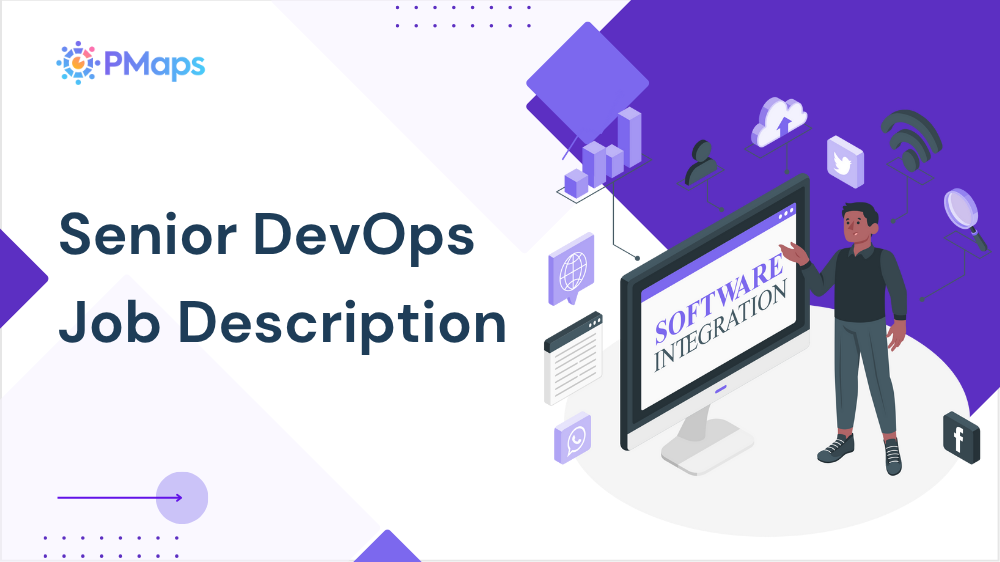
Mobile app development interview questions help you identify builders overhyped users. The best hires reason about trade-offs, test well, and ship reliably. This guide gives structured prompts and model answers you can use today. Evaluate thinking under constraints and hire for maintainable delivery across platforms and releases.
General Interview Questions for Mobile App Developers
Start broad to gauge judgment, collaboration, and product thinking before deep technical checks. Strong candidates connect choices to user impact, performance, and maintainability. They explain constraints plainly, quantify outcomes, and avoid tool worship. Use these questions to set a high baseline and surface practical experience across real release cycles.
1) How do you choose between native, cross-platform, and hybrid approaches?
What it assesses
Architecture judgment and constraint awareness.
What to look for
Discussion of performance targets, team skills, device APIs, and time to market. Clear trade-offs without bias. Willingness to revise with evidence.
Sample answer
“For high-fidelity graphics and device APIs, I prefer native. For content apps with shared logic, I use Flutter or React Native. I weigh performance budgets, hiring pipeline, and release cadence. I prototype early to validate startup time, size, and UX smoothness.”
2) Describe your app architecture on a recent project.
What it assesses
Separation of concerns and maintainability.
What to look for
MVVM, MVI, or Clean patterns. Dependency injection, module boundaries, and offline handling. Testing seams described.
Sample answer
“I used MVVM with a repository layer. DI managed lifecycles. Features were modular for faster builds. We cached with Room and persisted critical reads for offline use. ViewModels exposed immutable state to avoid leaks and simplify tests.”
3) How do you decide what to test at unit, integration, and UI levels?
What it assesses
Test strategy and risk thinking.
What to look for
A pyramid mindset. Fast units, service tests for contracts, thin UI coverage for journeys. Flake control.
Sample answer
“I keep broad unit coverage for logic. I use API contract tests for services. UI covers checkout, login, and payments only. I tag tests and run PR smokes fast. Nightly runs deeper flows to keep CI signal clean.”
4) What metrics do you track to judge app quality post-release?
What it assesses
Outcome focus.
What to look for
Crash-free sessions, ANR rate, cold start, TTI, retention, and funnel drop-offs. Actionable thresholds.
Sample answer
“I monitor crash-free users, ANR under 0.47%, cold start under two seconds, and key funnel steps. I set alerts for regressions over agreed budgets. I link dashboards to release notes for fast rollback decisions.”
5) How do you handle app size budgets?
What it assesses
Performance discipline.
What to look for
App thinning, split APKs/App Bundles, asset compression, and dead code removal. Data-driven trade-offs.
Sample answer
“I enforce size budgets in CI. I enable App Bundles, use vector drawables, and split native binaries. I remove unused transitive deps and compress assets. Regressions block merges until explained or fixed.”
You’ve seen the questions. Now confirm skills with the Mobile App Developer Assessment.
Behavioral Interview Questions
Behavioral prompts reveal ownership, collaboration, and resilience. Senior developers should show calm incident handling, transparent communication, and measurable outcomes. Ask for STAR responses and push for specifics. You want clear actions, not claims. Use these to confirm consistency across tough deadlines and shifting product priorities.
6) Tell me about a production crash you resolved quickly.
What it assesses
Incident response and triage skill.
What to look for
Use of crash analytics, feature flags, and hotfix plans. Communication and learning loop.
Sample answer
“After a payment crash spiked, I correlated stack traces in Crashlytics, flagged the feature off, and shipped a hotfix within three hours. I added a unit guard and a UI test for the edge case. Crash-free sessions returned above 99.5%.”
7) Describe a time you challenged a risky release.
What it assesses
Risk judgment and stakeholder management.
What to look for
Evidence-based pushback, rollout plan changes, and diplomacy.
Sample answer
“Logs revealed ANR risk on older devices. I recommended a phased rollout at 5%, with guardrails and real-time monitoring. We fixed a thread contention bug before full rollout. Ratings improved instead of dipping.”
8) Share a moment you improved developer velocity without harming quality.
What it assesses
Process tuning.
What to look for
Build caching, modularization, parallel CI, and targeted tests. Before/after numbers.
Sample answer
“I split the codebase into feature modules and added Gradle build cache. PR checks fell from 25 to 12 minutes. Flake rate stayed under one percent after tightening UI selectors.”
9) Tell me about mentoring a junior on app architecture.
What it assesses
Leadership and clarity.
What to look for
Code reviews with guidance, pairing, diagrams, and measurable growth.
Sample answer
“I co-built a sample feature using MVVM and repositories. We reviewed ViewModel boundaries and state handling. Their PR iteration count halved over two sprints, and they shipped an offline-safe module independently.”
10) Describe handling conflicting asks from product and design.
What it assesses
Negotiation and user focus.
What to look for
Evidence, prototypes, and alignment on goals. No stonewalling.
Sample answer
“I built two prototypes and ran a small usability test with analytics events. Data showed a six percent drop in completion for a fancy animation. We shipped the simpler flow and kept the animation behind a flag.”
Situational Interview Questions
Scenarios test judgment when requirements change or constraints collide. Strong candidates communicate risks early, propose phased paths, and protect user experience. Look for structured responses that balance performance, timeline, and maintainability. These prompts reveal calm decision-making during ambiguity and high pressure.
11) The API contract changes a day before code freeze. What now?
What it assesses
Resilience and planning.
What to look for
Versioning, feature flags, and consumer-driven contracts. Clear rollback.
Sample answer
“I pin to the previous version, add a compatibility layer, and ship behind a flag. I request a deprecation window and write a contract test to guard the new schema. We switch traffic after post-release validation.”
12) A critical UI test is flaky in CI on older devices. Next steps?
What it assesses
Stability strategy.
What to look for
Root-cause analysis, device matrix review, and selector fixes over sleeps.
Sample answer
“I reproduce locally with traces, replace brittle selectors with test IDs, and add proper waits. I narrow the device matrix to usage stats and keep one representative low-end device. The test exits quarantine only after ten clean runs.”
13) Marketing requires a heavy SDK that slows startup. Your approach?
What it assesses
Performance advocacy.
What to look for
Lazy loading, deferred init, and proof via metrics.
Sample answer
“I defer the SDK to post-first-render and load only needed modules. I measure TTI and cold start before and after. If budgets break, we use server-side events for that campaign instead.”
14) Accessibility bugs appear late in the cycle. What do you change?
What it assesses
Inclusive design discipline.
What to look for
Automated checks, screen reader testing, and design checklists.
Sample answer
“I add lint rules for content labels, run TalkBack/VoiceOver checks in PRs, and adopt color contrast tokens. I create a checklist for new components and gate merges on basic accessibility checks.”
15) You must ship during a traffic spike. How do you de-risk?
What it assesses
Rollout safety.
What to look for
Staged rollout, server toggles, and fast rollback.
Sample answer
“I use a phased rollout at 1%, 5%, then 20%, with server feature flags. I monitor crash rate, ANR, and funnel steps. Any regression triggers halt and rollback automatically.”
Technical Interview Questions
Technical depth separates portfolio polish from production readiness. Seek practical mastery of platform internals, state management, performance tuning, and tooling. Good answers show measured trade-offs, observability, and respect for budgets. Use these prompts to confirm real-world strength beyond tutorial knowledge.
16) Explain your state management approach on mobile.
What it assesses
Complexity control.
What to look for
Unidirectional data flow, immutable state, and predictable updates. Clear error handling.
Sample answer
“I use unidirectional flow with immutable models. ViewModels expose state streams. Side effects live in use cases. Errors map to user-friendly states. This keeps screens predictable and easy to test.”
17) How do you tune startup time and runtime performance?
What it assesses
Performance engineering.
What to look for
Lazy loading, background init, profiling tools, and budgets.
Sample answer
“I profile with Instruments or Android Profiler, defer non-critical work, and precompute heavy assets at install. I keep cold start under two seconds and watch GC churn, overdraw, and main-thread I/O.”
18) Describe your offline strategy and data sync.
What it assesses
Reliability under poor networks.
What to look for
Local caching, conflict resolution, and background sync policies.
Sample answer
“I store critical reads locally, queue writes, and resolve conflicts with server timestamps and merge rules. I sync on connectivity and battery thresholds. Users never lose entered data.”
19) How do you secure local storage and network calls?
What it assesses
Security hygiene.
What to look for
TLS pinning, encrypted storage, and safe key handling. No secrets in code.
Sample answer
“I use TLS pinning for critical calls, encrypt local data with OS keystore, and rotate tokens. Secrets never ship in the app. I monitor for man-in-the-middle attempts and certificate issues.”
20) What is your approach to modularization and build speeds?
What it assesses
Scalability and productivity.
What to look for
Feature modules, shared libs, and parallel builds. Clear boundaries.
Sample answer
“I split features into modules with strict APIs. Shared UI and networking live in libraries. CI builds in parallel with caching. Developers touch smaller graphs, so PRs stay fast.”
21) Compare Flutter and React Native for a complex product.
What it assesses
Cross-platform trade-offs.
What to look for
Rendering model, ecosystem strength, and team skill fit.
Sample answer
“Flutter offers consistent rendering and strong performance. React Native integrates with web talent and JS ecosystem. For pixel-perfect animations, I prefer Flutter. For rapid staffability with JS skills, React Native works well.”
22) How do you manage feature flags safely on mobile?
What it assesses
Release control.
What to look for
Server-driven flags, kill switches, and analytics checks.
Sample answer
“I keep flags server-driven with defaults that favor safety. I add kill switches for risky features. I log exposures and outcomes to verify impact before scaling.”
23) What’s your crash analysis workflow?
What it assesses
Observability and triage.
What to look for
Symbolication, grouping, repro steps, and fix validation.
Sample answer
“I group by signature, fetch device context, and reproduce with the same build. I add guardrails and tests, then monitor crash-free users post-release. Fixes must hold for a full rollout.”
24) How do you protect privacy while using analytics?
What it assesses
Compliance mindset.
What to look for
Event minimization, consent, and data retention rules.
Sample answer
“I track minimal events, respect consent, and avoid PII. I anonymize IDs and enforce retention limits. I review events with legal and product before shipping.”
25) Describe your CI/CD setup for mobile apps.
What it assesses
Delivery engineering.
What to look for
Caching, code signing, fast lanes, and artifact integrity.
Sample answer
“I cache dependencies, sign via secure vaults, and run PR smokes on emulators. Nightly jobs build release candidates with changelogs. Store uploads occur on tags after QA sign-off.”
26) How do you manage third-party SDK risk?
What it assesses
Supply-chain prudence.
What to look for
Version pinning, changelog review, and performance checks.
Sample answer
“I pin versions, review release notes, and test on a canary build. I watch startup time, size, and privacy implications. Regressions block updates.”
27) What differentiates your code reviews on mobile projects?
What it assesses
Quality culture.
What to look for
Checks for UI states, performance, and accessibility. Helpful, specific feedback.
Sample answer
“I review for state leaks, long main-thread work, and accessibility labels. I ask for test IDs and tracing. I leave clear suggestions with examples, not vague comments.”
Need a role check? Revisit the Mobile App Developer Job Description before your next step.
Pro Tips for Interviewing Mobile App Developers
You are hiring for reliability, not flash. Use tasks that expose thinking, not just syntax. Scorecards should reward maintainability, performance budgets, and user empathy. Combine structured questions with a small hands-on exercise. Validate claims with traces, dashboards, and measurable outcomes from previous releases.
- Run a 60-minute task: build a screen with offline caching and tests.
- Require test IDs, accessibility labels, and loading states.
- Gate PRs with crash-free, startup, and size budgets.
- Simulate a phased rollout plan with flag strategy.
- Standardize using a tailored mobile developer test.
Conclusion
Great mobile hires balance user experience, performance, and delivery speed. Use this guide to assess real judgment under constraints. Define expectations with a clear mobile developer job description, then validate skills using our mobile developer test. For help, call 8591320212 or email assessment@pmaps.in




.png)




